You’ve been striving to improve efficiency in classifieds data capture, but have you considered the game-changing impact of implementing these 8 crucial steps? From automation strategies to data quality enhancement and advanced classification systems, there’s a wealth of untapped potential waiting to revolutionize your processes. Stay tuned to uncover how these strategic measures can propel your classifieds data capture to new heights of effectiveness and productivity.
Automation Strategies
When it comes to improving efficiency in classifieds data capture, one of the key strategies to consider is automation. Machine learning and OCR technology play vital roles in automating the process of extracting data from classifieds listings. Machine learning algorithms can be trained to recognize patterns and extract relevant information from unstructured data, such as images or text. OCR technology, on the other hand, enables the conversion of different types of documents, like scanned images or PDFs, into editable and searchable data.
Data Extraction Improvements
To enhance the efficiency of data extraction in classifieds, a focus on improving the accuracy and speed of capturing information is paramount. One way to achieve this is through OCR technology integration, which can streamline the process by automatically extracting text from images or scanned documents. By implementing OCR technology, you can significantly boost data extraction efficiency, saving time and reducing the risk of human error.
However, even with OCR technology, manual review remains crucial for ensuring data extraction accuracy. Human oversight is essential in verifying the extracted information, correcting any discrepancies, and ensuring the data is captured correctly. While OCR technology can handle the bulk of the extraction process, manual review adds a layer of quality control that is indispensable in classifieds data capture.
Data Quality Enhancement
To enhance the quality of your classifieds data, you can implement accuracy verification techniques, utilize error detection methods, and employ data cleansing strategies. By verifying the accuracy of the information extracted and detecting errors promptly, you can ensure that your data is reliable and trustworthy. Cleansing the data further refines its quality, making it more valuable for analysis and decision-making purposes.
Accuracy Verification Techniques
Enhancing the accuracy of data in classifieds is crucial for maintaining the integrity and reliability of the information being captured. To ensure the precision of the data, consider implementing the following accuracy verification techniques:
- Manual Review: Assign trained personnel to manually review classified data entries to identify and correct any errors or inconsistencies that may have been missed during the initial data capture process.
- External Validation: Utilize external sources or databases to cross-reference the classified data being captured. This process helps verify the accuracy of the information by comparing it with reliable external sources.
- Cross-Verification: Implement a system where data entries are cross-verified by multiple team members to reduce the likelihood of errors slipping through undetected.
- Random Sampling: Conduct regular random sampling checks on the classified data to assess the overall accuracy level and identify areas that may require additional attention or improvement.
Error Detection Methods
Maintaining the accuracy of classified data is an ongoing process that requires vigilant attention to detail and the implementation of robust error detection methods. In this context, error detection methods play a crucial role in identifying and rectifying inaccuracies within classified data. One effective approach to error detection is through the utilization of machine learning algorithms. By training these algorithms on historical data, they can learn to recognize patterns and anomalies that may indicate errors. Machine learning allows for the automation of error detection processes, enabling quicker identification and resolution of inaccuracies.
Pattern recognition is another key component of error detection methods in classified data. By establishing patterns in the data, such as common errors or discrepancies, it becomes easier to flag potential inaccuracies for further investigation. Pattern recognition techniques can be employed to compare new data entries against established patterns, aiding in the early detection of errors before they propagate further.
Data Cleansing Strategies
Implementing effective data cleansing strategies is essential for enhancing the quality of classified data. To ensure accuracy and consistency in your classifieds database, consider the following key data cleansing strategies:
- Data Validation: Implement validation rules to check for accuracy and validity in the data. This step involves verifying that the data meets specific criteria or formats before being entered into the system.
- Data Standardization: Standardize the format and structure of your data to ensure uniformity and consistency. This includes formatting dates, addresses, and other data elements in a consistent manner.
- Deduplication: Identify and eliminate duplicate entries within your database to prevent data redundancy. Deduplication helps maintain data integrity and avoids confusion caused by multiple entries of the same information.
- Error Correction: Develop procedures to promptly correct any errors found in the data. Regularly review and address inconsistencies, missing information, or inaccuracies to maintain high data quality standards.
Better Storage Solutions
To enhance the efficiency of classifieds data capture, it is crucial to address the aspect of better storage solutions. Implementing cloud integration can significantly improve data accessibility and scalability. By storing classified data in the cloud, you can easily access it from anywhere, facilitating seamless collaboration and reducing the risk of data loss. Cloud integration also allows for automatic backups and updates, ensuring that your data is always up to date and secure.
Furthermore, considering archival options is essential for managing large volumes of historical classified data. Archiving older data that is not frequently accessed helps optimize storage space and enhances overall system performance. It is advisable to create a systematic archiving process based on the relevance and age of the data to maintain an organized storage structure.
Incorporating cloud integration and implementing effective archival options can streamline classifieds data storage, making it more efficient and accessible for your business needs.
Data Privacy Upgrades
Enhancing data privacy is paramount in classifieds data capture processes to safeguard sensitive information and comply with regulations. When considering data privacy upgrades, there are several essential elements to take into account:
- Implement Advanced Encryption Methods: Utilize strong encryption algorithms to protect classifieds data from unauthorized access or cyber threats.
- Ensure Compliance with Data Protection Regulations: Adhere to relevant compliance regulations like GDPR or CCPA to avoid legal repercussions and maintain trust with users.
- Regular Security Audits and Updates: Conduct frequent security audits and keep software systems up to date to address any vulnerabilities promptly.
- Employee Training on Data Privacy: Provide comprehensive training to staff on handling classifieds data securely and ensure they understand the importance of compliance with privacy regulations.
Data Analysis Optimization
Upgrading data privacy measures within classifieds data capture processes serves as a foundation for ensuring the security and integrity of sensitive information. Once data privacy is optimized, the focus shifts to enhancing data analysis methods. Incorporating machine learning algorithms can significantly boost the efficiency of data analysis in classifieds. By utilizing machine learning, patterns and trends within the data can be identified more accurately and efficiently, leading to improved decision-making processes.
Data visualization plays a crucial role in data analysis optimization. It allows for the representation of complex data sets in a visual format, making it easier for users to interpret and derive insights. Visualizing data through graphs, charts, and dashboards enhances understanding and aids in identifying key information quickly. This visual representation not only simplifies the analysis process but also enables stakeholders to make informed decisions based on the presented data.
Classification System Advancement
With the evolution of technology and the increasing volume of data being processed in classifieds data capture, the need for advancing classification systems becomes imperative. To enhance efficiency and accuracy in this process, consider the following:
- Utilize Advanced Categorization Algorithms: Incorporate sophisticated categorization algorithms that can handle large datasets and complex classification tasks with precision.
- Implement Machine Learning Techniques: Employ machine learning techniques such as neural networks or support vector machines to improve the classification accuracy and adaptability of the system.
- Explore Ensemble Methods: Combine multiple classification models using ensemble methods like random forests or gradient boosting to enhance the overall performance and robustness of the system.
- Continuous Model Refinement: Regularly update and refine the classification models using new data and feedback mechanisms to ensure the system stays relevant and effective over time.
Implementation and Monitoring
To effectively improve efficiency in classifieds data capture, it is crucial to focus on implementing a tracking system that monitors progress accurately. By monitoring progress effectively, you can ensure that data accuracy is maintained throughout the entire process. Implementing robust monitoring mechanisms will help in identifying any potential issues early on and allow for timely corrections to be made.
Tracking Progress Effectively
Regularly monitoring and effectively implementing progress tracking mechanisms is crucial in ensuring the success of any data capture initiative within classifieds operations. To track progress effectively, consider the following:
- Establish Clear Performance Metrics: Define specific key performance indicators (KPIs) related to data capture efficiency, accuracy, and timeliness. This will provide a clear benchmark for evaluating progress.
- Utilize Workflow Management Tools: Implement tools that aid in organizing and streamlining the data capture process. Workflow management systems can help assign tasks, track progress, and identify bottlenecks.
- Regular Progress Reviews: Conduct regular reviews to assess how well the data capture process is meeting the established performance metrics. Adjust workflows as needed based on these reviews.
- Feedback Mechanisms: Encourage feedback from team members involved in data capture. Their insights can highlight areas for improvement and help fine-tune the tracking process for better efficiency.
Ensuring Data Accuracy
Implementing and monitoring data accuracy is a critical aspect of classifieds operations to ensure the reliability and integrity of captured information. Manual verification processes play a key role in guaranteeing that the data entered is error-free and consistent. By implementing manual verification checkpoints at various stages of data entry, you can significantly reduce inaccuracies and maintain data quality.
Training programs are essential for staff involved in data capture to understand the importance of accuracy and the correct procedures for verifying information. Regular training sessions can help reinforce the significance of data accuracy and equip employees with the necessary skills to identify and rectify errors effectively.
To monitor data accuracy effectively, establish metrics to track error rates and implement regular audits to identify any recurring issues. By continuously monitoring data accuracy and addressing any discrepancies promptly, you can uphold the quality and reliability of classifieds data, ultimately enhancing the overall efficiency of your operations.
Frequently Asked Questions
How Can Classifieds Data Capture Benefit Small Businesses?
Classifieds data capture can benefit small businesses by providing increased visibility and cost savings opportunities. You can reach a wider audience and reduce marketing expenses, leading to improved brand recognition and higher sales potential.
What Are the Potential Challenges of Implementing Data Capture Automation?
When implementing data capture automation, you may face challenges with training needs and integration issues. Ensuring proper training for personnel and seamless integration with existing systems is crucial for successful automation implementation.
Will Data Extraction Improvements Affect Data Accuracy?
Improving accuracy in data extraction can significantly enhance data reliability. By streamlining processes and implementing advanced extraction techniques, you can ensure that the captured data is not only faster but also more precise and dependable.
How Does Better Storage Solutions Impact Data Accessibility?
Improved organization through better storage solutions enhances data accessibility. Streamlined workflow leads to increased efficiency in data retrieval. By implementing these changes, you can significantly impact the ease of accessing and utilizing classifieds data effectively.
Are There Privacy Risks Associated With Data Capture Optimization?
Privacy concerns arise with data capture optimization due to potential data security risks. Your sensitive information could be compromised. However, with robust security measures, these risks can be mitigated. Remember, your data’s safety is paramount.




